1,071 news posts

Featured news
10 Feb 2022
Injuries to Zambian lions and leopards caused by shotguns and wires snares greatly underestimated
Injuries to Zambian lions and leopards caused by shotguns and wires snares greatly underestimated, finds new study in Frontiers in Conservation Science

Climate action
08 Feb 2022
Greenhouse gas emission impact from peatland fires underestimated by 200%-300%, shows new study
Greenhouse gas emission impact from peatland fires underestimated by 200%-300%, shows new study in Frontiers in Climate

Earth science
08 Feb 2022
5 fascinating Frontiers articles you may have missed in January 2022
By Colm Gorey, Science Communications Manager A newly born desert tortoise. Image: K. Kristina Drake/ USGS. At Frontiers, we bring some of the world’s best research to a worldwide audience. But with tens of thousands of articles published each year, many often fly under the radar. Now, as part of new series each month, Frontiers will highlight just some of those amazing papers you may have missed. 1: Too hot to nest? In a hot summer, one tortoise can switch from nesting to developing eggs internally Researchers from Australia and South Africa published an article in Frontiers in Ecology and Evolution identifying what may be a novel reproductive strategy in Chersina angulate tortoises that has the potential to enhance the resilience of species to global warming. After observing a captive colony of in Cape Town, South Africa and checking back through historical data, Gerald Kuchling of The University of Western Australia and Margaretha Hofmeyr of the University of Western Cape found that local ambient temperature altered how females deposited their last clutch of eggs. Periods of unusual heat may result in females switching from depositing their eggs in a nest to develop(oviposition), to growing the egg in their body […]
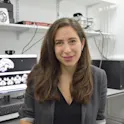
Featured news
07 Feb 2022
‘Try to reverse these wrong stereotypes’ – an interview with Prof Sarah Garfinkel & Dr Lisa Quadt #WomeninScience
By Janine Gronewold and Miriam Engels Interviewee Prof Sarah Garfinkel Interviewee Dr Lisa Quadt During the Covid-19 pandemic, with its repeated lockdowns and social restrictions, many people across the globe have reported increased feelings of isolation and loneliness. Prolonged loneliness is known to be associated with poor mental and physical health outcomes, for example increased cerebrovascular disease. What could be the mechanism underlying this association? That is the subject of a recent perspective article in Frontiers in Integrative Neuroscience. Its authors, Dr Janine Gronewold, a postdoctoral research fellow at the Department of Vascular Neurology and Dementia of the University Hospital Essen, and Miriam Engels, a doctoral student at the Institute of Medical Sociology at the University Clinic Düsseldorf and lecturer at the Open University of the Netherlands, were inspired by a recently proposed framework for adaptive versus maladaptive brain-body interactions. For the International Day of Women and Girls in Science 2022 on 11th February, Gronewold (denoted as JG below) and Engels (ME) here interview two of the authors behind this framework, Dr Sarah Garfinkel (SG), professor at the Institute of Cognitive Neuroscience, University College London, and her postdoc Dr Lisa Quadt (LQ), a research fellow in Clinical Neuroscience at Brighton […]

Featured news
04 Feb 2022
Sex disparities in sports medicine research may threaten the health and careers of female athletes
By Emily Parker, University of Iowa Carver College of Medicine Image: leungchopan/Shutterstock.com ‘Hormones’ have long been blamed for anterior cruciate ligament (ACL) injuries in female athletes, but according to a new review paper, one menstrual hormone may be mediating the damage: relaxin. University of Iowa Carver College of Medicine student, Emily Parker, writes to Frontiers that upon noticing the lack of progress in the 20-odd years since early relaxin-musculoskeletal studies, the support of orthopedic department mentors and the assistance of a fellow student allowed a thorough dive into the disjointed, cross-disciplinary research trail. Female athletes are between three and eight times more likely to suffer devastating ACL injuries compared to their male counterparts. That’s according to 16 years of data from the US National Collegiate Athletics Association (NCAA) Injury Surveillance System, published in a new paper to Frontiers in Endocrinology. Alex Meyer, one of the authors of this latest research, noted: “It has almost been accepted that these [ACL injuries] are just more prevalent in women.” The cost of female ACL injuries is huge and multi-faceted, seen in the billions of dollars of healthcare costs, team rosters picked apart by injury come tournament time, and future consequences such as post-traumatic […]
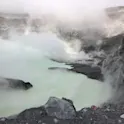
Featured news
28 Jan 2022
Extremely harsh volcanic lake shows how life might have existed on Mars
By K.E.D. Coan, science writer Fieldwork at Laguna Caliente, Poás volcano, Costa Rica. Credit: Justin Wang Only a few microbes inhabit Earth’s most extreme environments, but they have varied adaptations to do so, reports a new study. Hydrothermal hot springs such as at the Poás volcano in Costa Rica provide an opportunity not only to explore life on Earth, but also to understand how life might have evolved on Mars. A few specialist microbes survive conditions analogous to those of Mars’ early history, reports a new publication in Frontiers in Astronomy and Space Sciences — and this may be thanks to a broad range of adaptations. One of the most hostile habitats on Earth The hydrothermal crater lake Laguna Caliente of the Poás volcano in Costa Rica is one of the most hostile habitats on the planet. The water is ultra-acidic, full of toxic metals and the temperatures range from comfortable to boiling. In addition, recurrent ‘phreatic eruptions’ cause sudden explosions of steam, ash and rock. Despite such deadly eruptions, hydrothermal environments may be where the earliest forms of life began on Earth — and potentially also on Mars, if there ever was life. Beyond discovering how life can survive […]
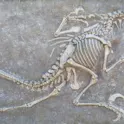
Featured news
27 Jan 2022
AI breakthrough could revolutionize how we research dinosaur fossils
By Peter Rejcek, science writer Image credit: Natalia van D / Shutterstock.com The use of x-ray computed tomography has greatly improved the ability of paleontologists to study the morphology of dinosaur fossils. Now, thanks to innovations in artificial intelligence, machines may soon be able to tackle the labor-intensive job of segmentation, a process for classifying similar sections of an image for analysis. Researchers tested different deep neural networks on more than 10,000 CT scans of embryonic skulls with encouraging results. One of the most promising applications of artificial intelligence technologies is the identification of tumors from high-resolution medical imagery. Can the same techniques be used to help paleontologists more quickly analyze similar scans of dinosaur fossils? Researchers reported some of the early answers — and remaining challenges — in a new paper published in Frontiers in Earth Science. Much of what scientists can glean from the fossil record of dinosaurs relies on the morphology of the preserved remains of the animals. To study the interior structure of a specimen generally requires cutting thin sections, effectively destroying the sample in the process. That changed with the introduction of high-resolution scanning technologies like x-ray computed tomography (CT), which basically reconstructs internal structures […]

Environment
26 Jan 2022
Scientists decode 450 years of boom and crisis in Europe from ages of building timber
By Mischa Dijkstra, Frontiers science writer Roof truss of the Chapelle Saint-Denis in Marmoutier in Alsace, France, from the 16th century. Credit: Willy Tegel Scientists have reconstructed European socio-economic cycles between 1250 and 1699 in unprecedented detail, by using the power of tree rings to reveal the exact age of more than 54,000 pieces of timber from historical buildings. Tracking building activity across the years, estimated from felling year of timber from historical buildings, can yield an unrivaled economic record for premodern Europe. That is the conclusion from a vast study by a consortium of scientists across Europe, published in Frontiers in Ecology and Evolution. By dating timber from tree rings – to the exact year of felling – from historical buildings, and statistically analyzing the distribution of building years, the authors deduce multiple periods of socio-economic prosperity and downturn between 1250 and 1699, independent from other historical data. Crucially, they show how different European regions were differentially affected, and at different times. When historical records are too scant to reconstruct large-scale demographic and societal changes, environmental measures can be used. For example, numbers of shipwrecks have been used in past research to chart trade intensity, pollen to reconstruct agricultural […]
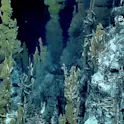
Featured news
19 Jan 2022
Likely energy source behind first life on Earth found ‘hiding in plain sight’
By Jessica Wimmer and William Martin A deep-sea hydrothermal vent. According to one theory, the first life on Earth arose at vents like these. Credit: NOAA Office of Ocean Exploration (CC BY-SA 2.0) Life on Earth arose roughly four billion years ago. How it arose, and from what energy source, is of interest to everyone, because we humans like to know where we come from. The team of Prof William Martin at the University Düsseldorf’s Institute of Molecular Evolution investigates early evolution. In a recent paper in Frontiers in Microbiology, they argue that the source of energy required at life’s origin has been hiding in plain sight: under the environmental conditions at deep sea hydrothermal vents, hypothesized to have been the sites where life on Earth originated, the central biosynthetic reactions of life do not require an external energy source. Rather, these core metabolic reactions release energy all by themselves as long as H2 and CO2 are in supply. The scientists thus link life’s biochemical beginnings to naturally occurring geochemical reactions. Here, corresponding author Ms Jessica Wimmer and Prof Martin explain their findings for a wider audience. There are many competing theories for how and where life arose. Although the […]

Featured news
14 Jan 2022
Consuming sweeteners during pregnancy may affect baby’s microbiome and obesity risk
Consuming sweeteners during pregnancy may affect baby’s microbiome and obesity risk, finds new study in Frontiers in Nutrition

Featured news
13 Jan 2022
Emotionally manipulative political ads fail at swaying new voters, but excel at ensuring party loyalty
Emotionally manipulative political ads fail at swaying new voters, but excel at ensuring party loyalty, finds new study in Frontiers in Psychology

Featured news
11 Jan 2022
How do we define a well-lived life? First scientific evidence helps us get closer to an answer
How do we define a well-lived life?: First scientific evidence in Frontiers in Psychology helps us get closer to an answer
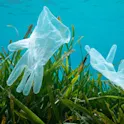
Environment
10 Jan 2022
More than half of plastics in Mediterranean marine protected areas originated elsewhere
More than half of plastics in Mediterranean marine protected areas originated elsewhere, finds a new study in Frontiers in Marine Science

Featured news
28 Dec 2021
Scientists digitally ‘unwrap’ mummy of pharaoh Amenhotep I for the first time in 3,000 years
By Mischa Dijkstra, Frontiers science writer For the first time since the 11th century BCE, scientists have unwrapped – virtually, using CT scans – the mummy of pharaoh Amenhotep I (r. 1525 to 1504 BCE), the only royal mummy to remain unopened in modern times. They show that the pharaoh was around 35 years old, 169cm tall, circumcized, and in good physical health when he died, apparently from natural causes All the royal mummies found in the 19th and 20th centuries have long since been opened for study. With one exception: egyptologists have never been bold enough to open the mummy of pharaoh Amenhotep I. Not because of any mythical curse, but because it is perfectly wrapped, decorated with beautiful flower garlands, and with face and neck covered by an exquisite lifelike mask inset with colorful stones. But now for the first time, scientists from Egypt have used three-dimensional CT (computed tomography) scanning to ‘digitally unwrap’ this royal mummy and study its contents. They report their findings in Frontiers in Medicine. This was the first time in three millennia that Amenhotep’s mummy has been ‘opened’. The previous time was in the 11th century BCE, more than four centuries after his […]

Featured news
20 Dec 2021
Requirement for adults to wear masks in schools has major impact on Covid-19 transmissions, study finds
Requirement for adults to wear masks in schools has major impact on Covid-19 transmissions, finds new study in Frontiers in Public Health